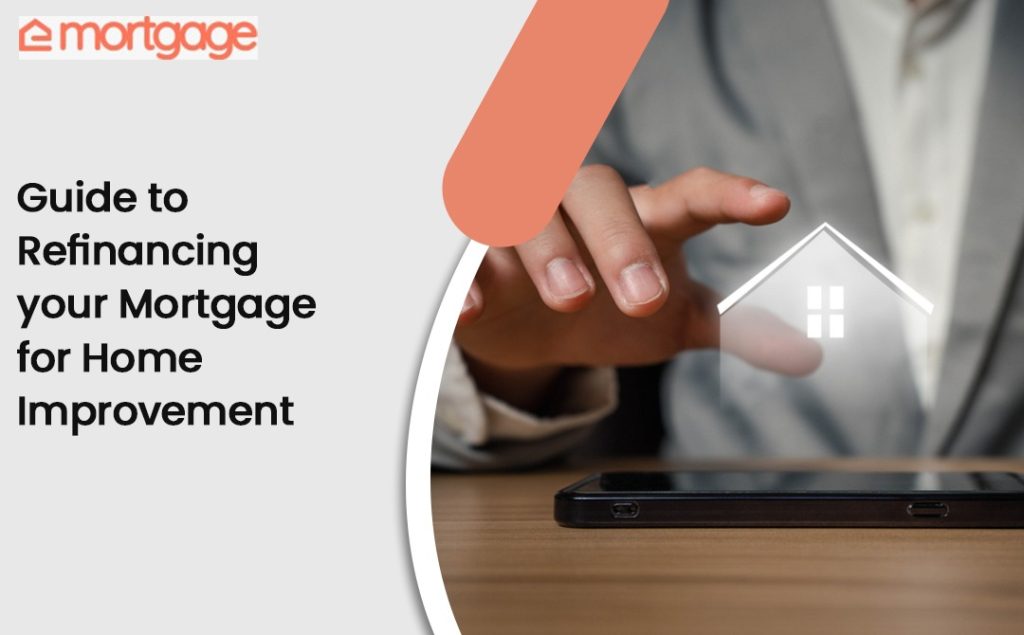Are you planning to renovate your home but facing budget constraints? Are you worried about the high-interest rates on your mortgage payments? If so, refinancing your mortgage for home improvements can be an excellent solution.
Many homeowners often face the dilemma of selling their homes or taking a loan to fund their renovation projects. However, refinancing your mortgage can help you access the funds you need to improve your home while keeping tabs on the monthly mortgage payments.
In this guide, learn how to refinance your mortgage for home improvements step-by-step and make the right choice. We will also share some helpful tips on how to go about the refinancing process and provide you with essential information on this approach’s benefits and potential drawbacks.
eMortgage is committed to helping you achieve your dream home without breaking the bank. So, let’s dive in and explore how refinancing your mortgage can help you achieve your home renovation goals.
What does it mean to refinance a mortgage?
Refinancing your mortgage means replacing your current mortgage with a new one. This new mortgage will have a different interest rate, term length, and payment schedule. Refinancing aims to save you money by reducing your monthly payment, lowering your interest rate, or shortening the term length of your mortgage.
Unlike a home equity loan, which allows you to borrow against the value of your home, refinancing involves replacing your existing mortgage with a new one. Home equity loans typically have higher interest rates than refinanced mortgages, requiring you to take out a second loan on top of your existing mortgage.
When you refinance your mortgage, you pay off your current mortgage and start fresh with a new loan. This can be a good option for homeowners who want to lower their monthly payments or take advantage of lower interest rates. However, it’s important to consider the refinancing costs and fees.
Refinancing for Home Improvements has its Benefits
Here are some benefits of refinancing for home improvements that you should consider:
- Lower interest rates: Refinancing your mortgage for home improvements can potentially save you money on interest over the life of your loan.
- Tax benefits: Depending on your circumstances, you may be able to deduct the interest you pay on your refinanced mortgage from your taxes. This can help reduce your overall tax burden and put more money back in your pocket.
- Increased home value: Home improvements can increase the value of your home, which can help you build equity and potentially scale its price in the future.
- Simplified payments: Refinancing your mortgage for home improvements can allow you to consolidate your debt and simplify your monthly payments.
Six Steps to Refinance for Home Improvements
- Assess your home value: Before starting the refinancing process, it’s crucial to know how much your home is worth. This will help you determine how much equity you have and how much you can borrow.
- Check your credit score: Lenders will look at your credit score when you apply for refinancing. A good credit score will help you get better interest rates and loan terms.
- Shop around for lenders: Research multiple lenders and compare their interest rates, fees, and loan terms. Be sure to look for lenders who specialize in refinancing for home improvements.
- Gather documentation: You’ll need to provide documentation such as income verification, tax returns, and bank statements to the lender.
Apply for refinancing: Once you’ve selected a lender, you can apply. The lender will review your application and may ask for additional documentation. - Close the loan: If you’re approved for refinancing, you must sign the loan agreement and pay any closing costs. Once the loan is closed, you’ll start paying for the new loan.
Things to Consider Before Refinancing
There are several factors you should consider before proceeding. Some of these factors include:
- Closing Costs: Refinancing your mortgage often involves closing costs that can add up to thousands of dollars. Be sure to calculate these costs and determine whether they are worth the potential savings from refinancing.
- Fees: Be aware of any fees associated with the refinancing process, such as appraisal or origination fees, and factor them into your decision-making.
- Length of the Loan: When refinancing, you may be extending the term of your mortgage. This means that you will be paying interest for a longer period and may end up paying more in interest over the life of the loan. Consider whether a longer loan term is worth the potential savings from refinancing.
- Your Credit Score: Your credit score plays a significant role in your ability to refinance your mortgage and the interest rate you will be offered. If your credit score is low, you may not qualify for refinancing or may be offered a higher interest rate, which could negate any potential savings.
Conclusion
Refinancing your mortgage for home improvements can be a smart financial move, allowing you to access funds for renovation projects while potentially lowering your interest rates and increasing your home’s value.
At eMortgage, we understand that refinancing your mortgage can be complex, but we’re here to help. Our team of experts can guide you through the refinancing process and help you find the best lender and loan option for your needs.
If you’re considering refinancing your mortgage for home improvements, we encourage you to contact us for personalized assistance.

